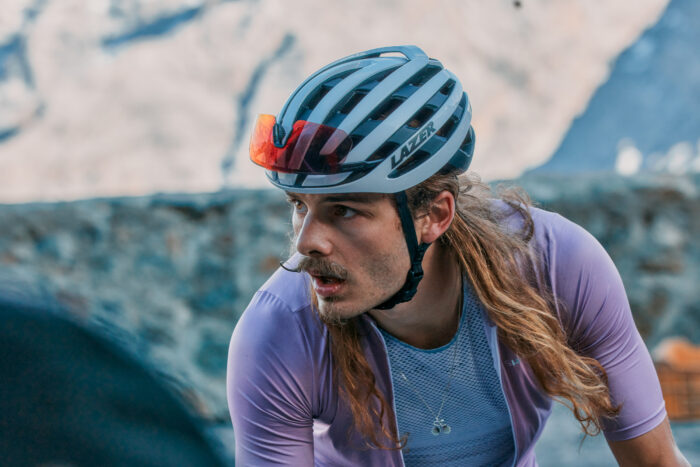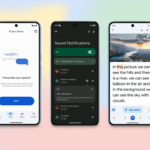However, helmet brands continue to make incremental improvements, and the recently updated Lazer Z1 KinetiCore is a perfect example. The Z1 has been successful in World Tours and has been a regular in the pro peloton, but Lazer has chosen to enhance a proven design.
I tested the Lazer Z1 KinetiCore over 2 weeks of road and gravel riding in central Texas during shoulder season and mild winter conditions. Over the six rides during this period, I paid attention to every sensation and detail of the updated Z1. I have high standards for bicycle helmets, and I won’t do a standalone review unless the model warrants it. And I believe the Lazer Z1 KinetiCore fully deserves this First Look review.
In summary: The Lazer Z1 KinetiCore was an outstanding all-around cycling helmet. It proved to be lightweight and well-ventilated, fitting my oval head well. The KinetiCore controlled crumple zones and 5-star Virginia Tech safety rating delivered confidence, and the feature set was impressive. Lastly, it was unanimously voted as one of the best-looking current helmets.
-
Verified weight
272 g, size L -
Rotational impact protection
Yes, KinetiCore -
Circumferential retention
Yes, Advanced RollSys -
Sunglass ports
Yes -
Sizes
S, M, L -
Colors
White, Matte Black, Cosmic Blue, Harbor Grey, Metallic Red, Flash Orange
-
Extremely lightweight -
Well-ventilated -
Molded-in rotational impact protection -
Several color options
KinetiCore: Standout Safety Feature on the Lazer Z1

Lazer’s prominent feature is KinetiCore; this proprietary technology was 10 years in the making and yields rotational impact protection without an additional slip layer. Mips and other forms of addressing rotational impacts in bicycle helmets are often add-ons to a helmet that can exist as a standalone model without rotational impact protection.
Mips or other additional low-friction layers can slide independently of the rest of the helmet, helping mitigate angular impact forces. But they can look, feel, and seem like an afterthought.
Instead of seeming like an afterthought, KinetiCore uses foam blocks molded into the energy-absorbing EPS liner of the Z1 that are engineered as crumple zones. These blocks can deform and break, absorbing rotational forces that would otherwise be transmitted to the head.
This built-in protection doesn’t add weight, thickness, or the perception of an additional layer within the helmet. It also keeps the airflow pathway clean, unlike some slip liners that can restrict airflow.
This patented technology is a significant contributor to the Lazer KinetiCore Z1’s 5-Star Virginia Tech safety rating. This is the highest mark that can be bestowed by the highly regarded third-party, independent lab.
Per Virginia Tech: “Since 2011, Virginia Tech researchers have been providing unbiased helmet ratings that allow consumers to make informed decisions when purchasing helmets. The helmet ratings are the culmination of over 15 years of research on head impacts in sports and identify which helmets best reduce concussion risk. This work is done as part of Virginia Tech’s service mission and is 100% independent of any funding or influence from helmet manufacturers.”
Other Features of the Lazer Z1 Bicycle Helmet

Weight
Another significant claim by Lazer is that the Z1 is “the lightest helmet including rotational impact protection on the market.” Indeed, the claimed weight of a medium-size Z1 is 220 g. My large-size sample weighs 272 g. For comparison, the last high-end road helmet I tested was the Specialized S-Works Prevail 3, which weighs 322 g in a large.
This lack of weight combined with a general shape that suits my oval head well were absolute joys, especially on rougher gravel rides. The lack of mass, associated momentum, and pressure points made the helmet virtually disappear on my head as the sensations of weight and movement were minimal.
Ventilation

Venting is equally as important as weight to most of us in the summers. The Lazer KinetiCore’s vents, floating headband, inclined bridges within the EPS energy-absorbing liner, and lack of a potentially air-blocking slip liner helped the M1 feel as airy as the most ventilated helmets I’ve tested.
On the road at even moderate speeds, the abundant airflow from front to back of the helmet was easily perceptible. Although I didn’t test the helmet in our typically torrid summer conditions, I’m confident it will earn a spot as one of my most-used helmets when the temperatures soar over 90 degrees.
Remarkably, Lazer claims that









